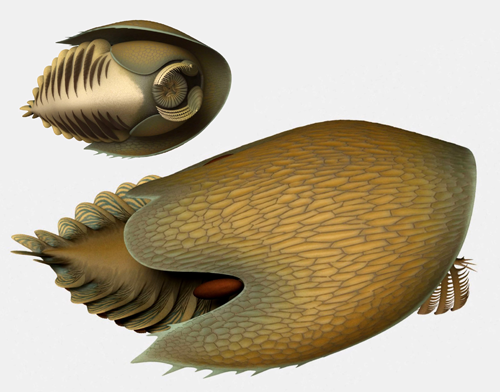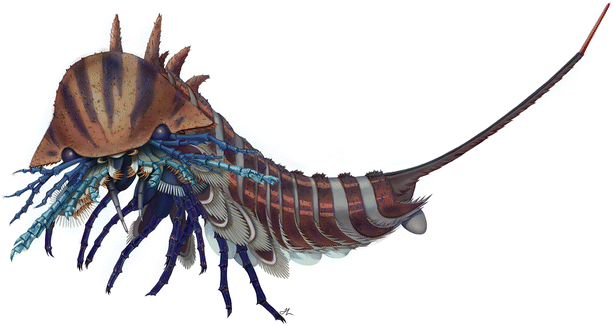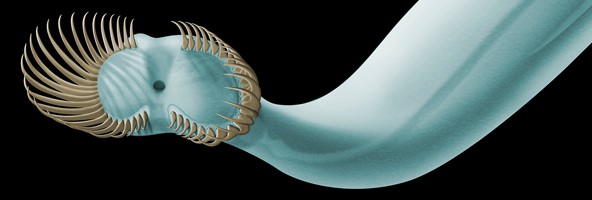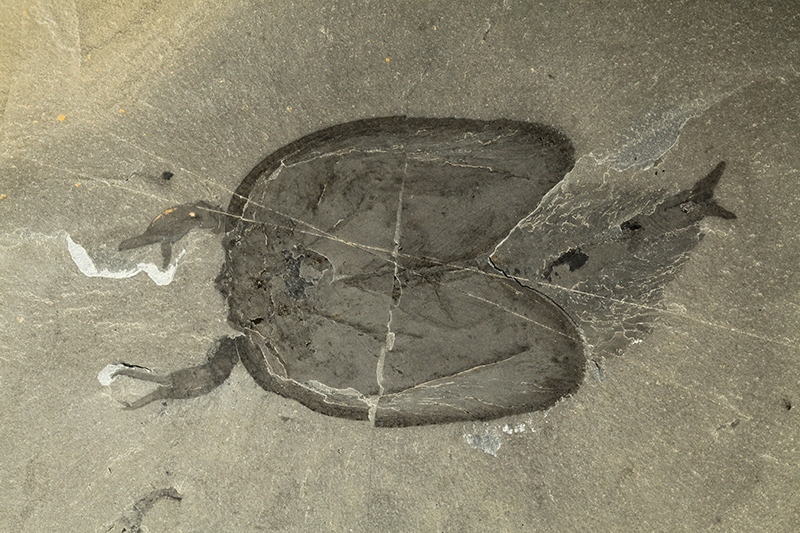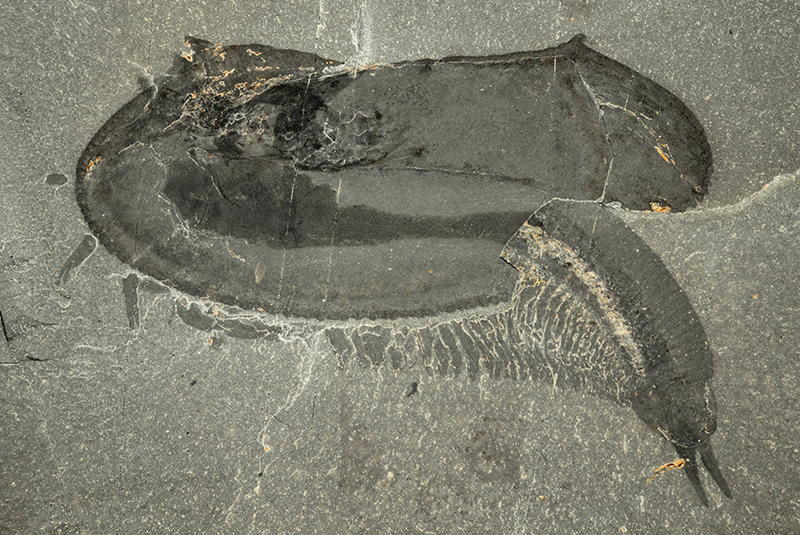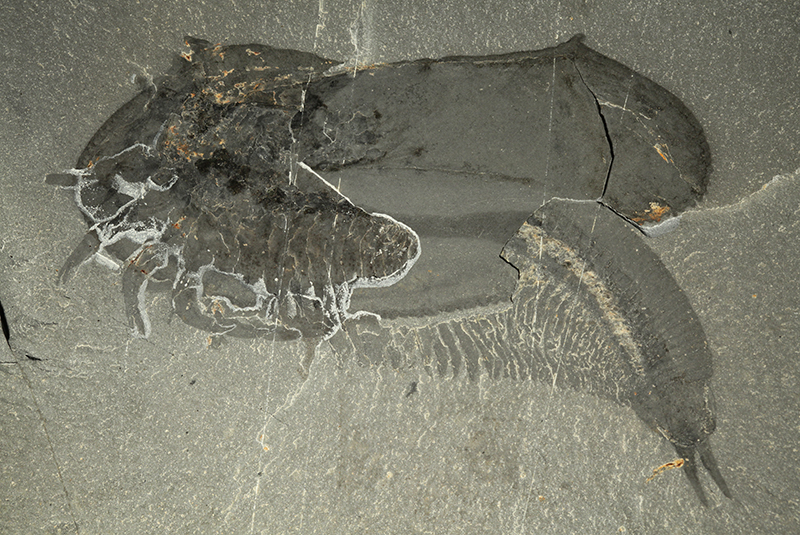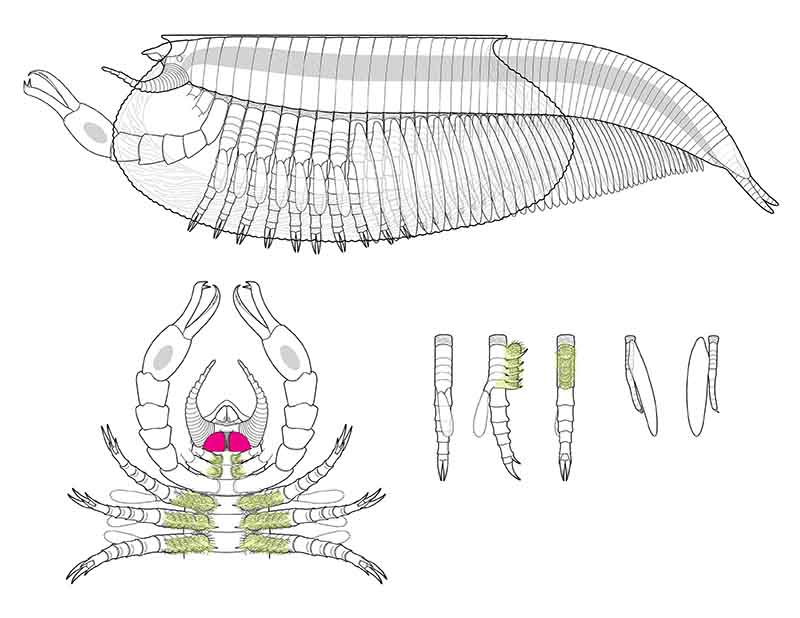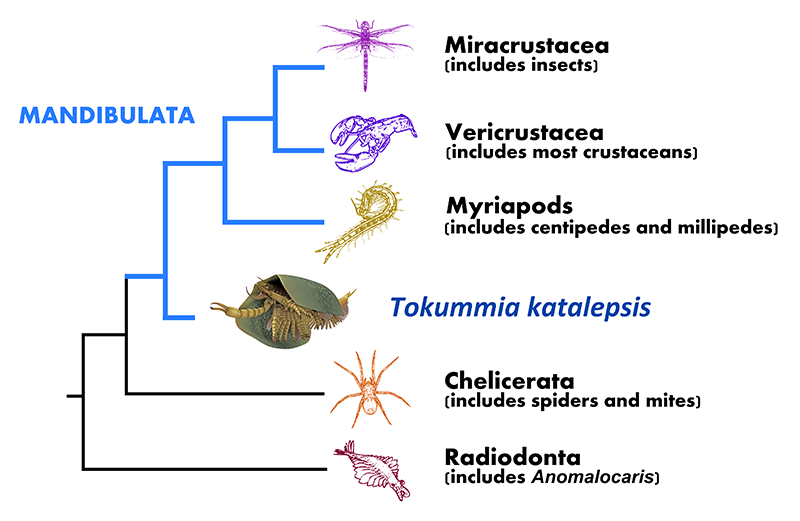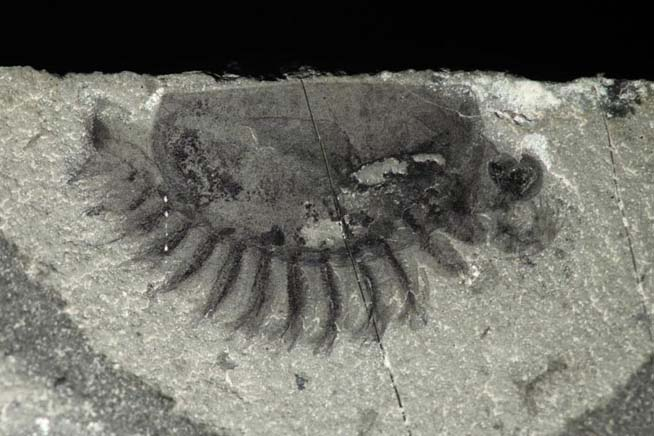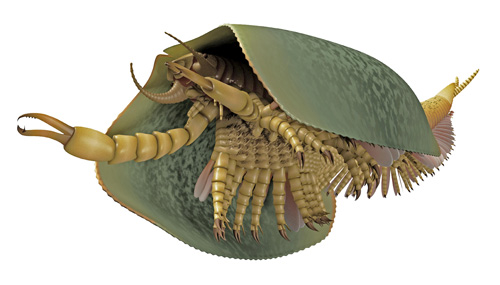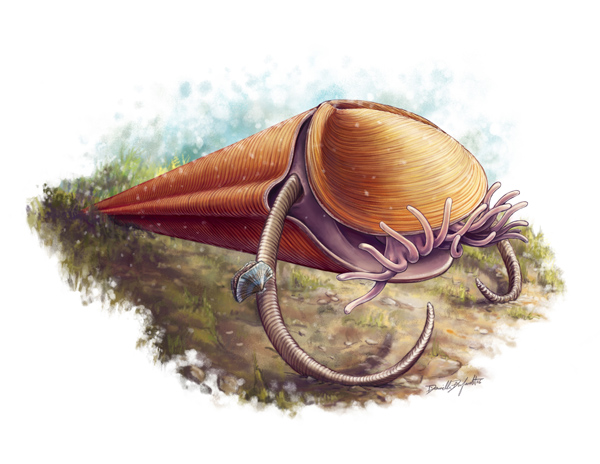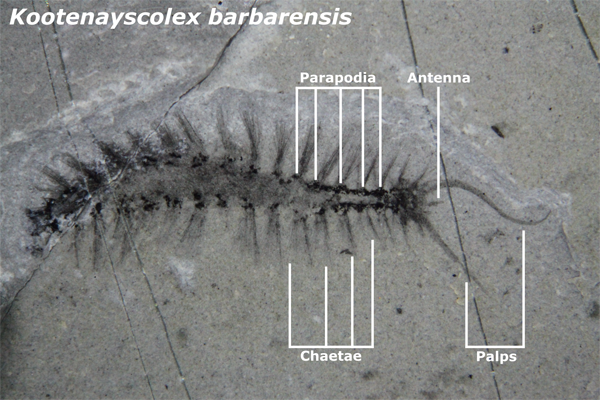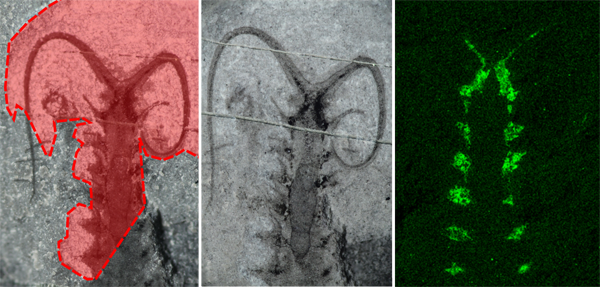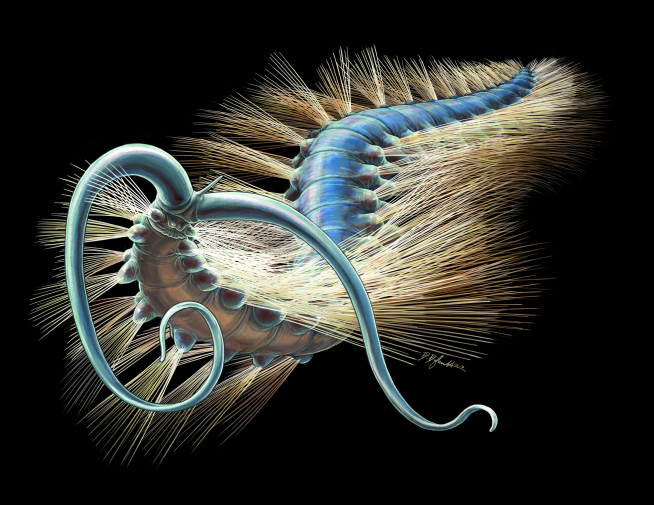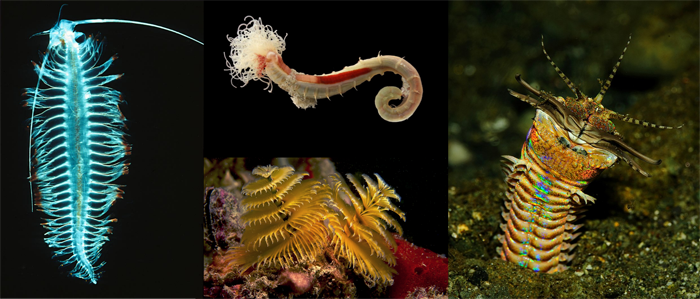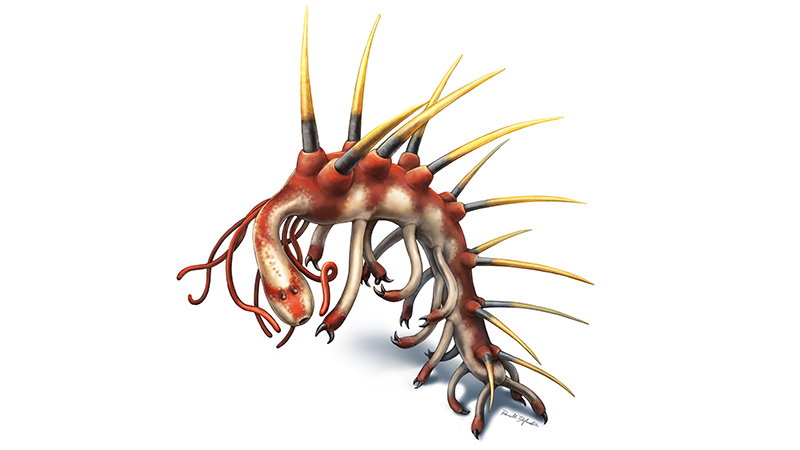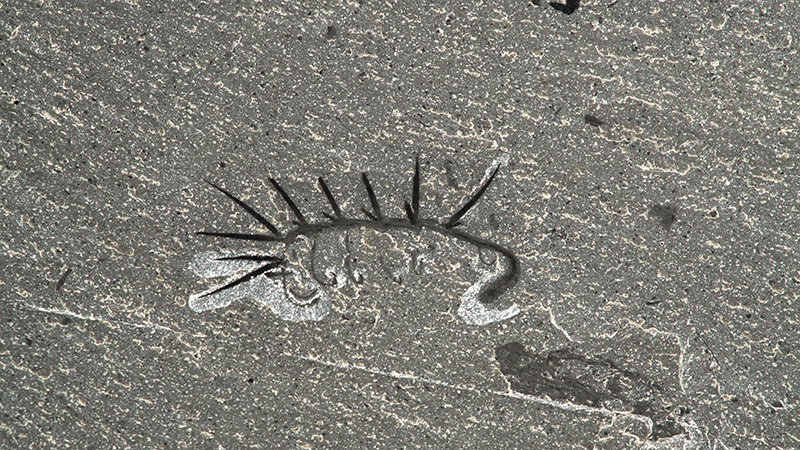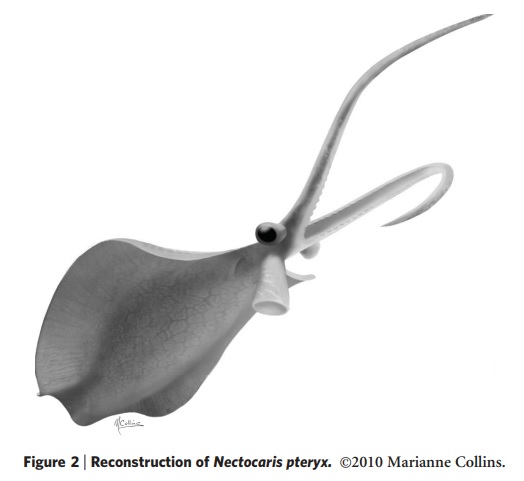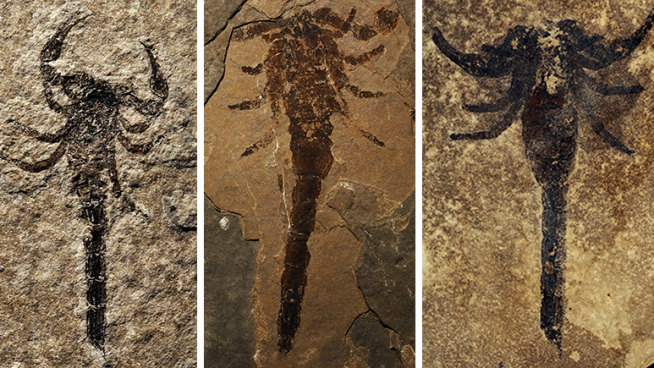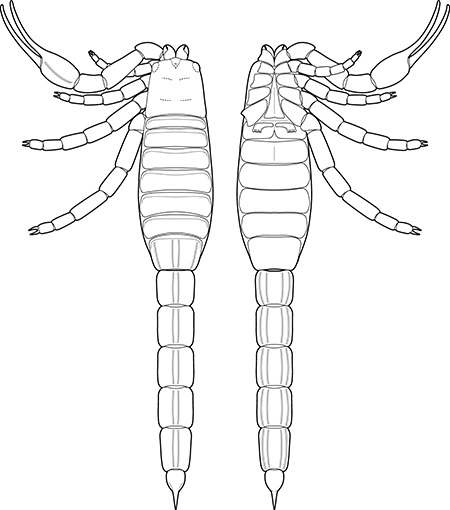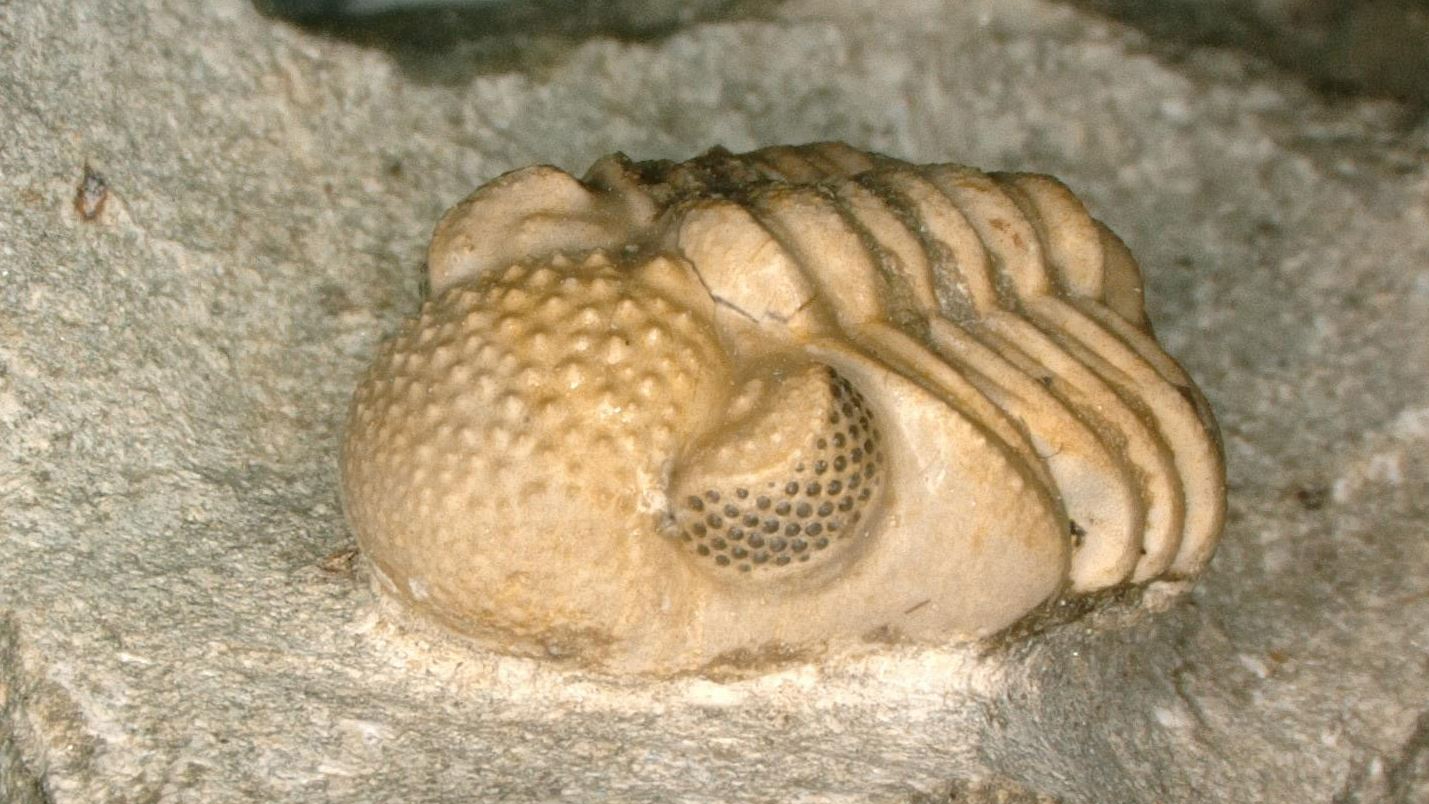https://reasonandscience.catsboard.com/t3179-recently-discovered-fossils-of-species-from-the-cambrian
Evolutionary biologists cannot offer an explanation for the sudden appearance in the fossil record of diverse life-forms with no discernible ancestral forms.
Royal Ontario Museum Burgess Shale Expeditions (1975-ongoing)
https://burgess-shale.rom.on.ca/en/history/discoveries/05-rom.php
Royal Ontario Museum: Massive new animal species discovered in half-billion-year-old Burgess Shale Sept 8, 2021
Palaeontologists at the Royal Ontario Museum (ROM) have uncovered the remains of a huge new fossil species belonging to an extinct animal group in half-a-billion-year-old Cambrian rocks from Kootenay National Park in the Canadian Rockies. The findings were announced on September 8, 2021, in a study published in Royal Society Open Science.
Named Titanokorys gainesi, this new species is remarkable for its size. With an estimated total length of half a meter, Titanokorys was a giant compared to most animals that lived in the seas at that time, most of which barely reached the size of a pinky finger.
“The sheer size of this animal is absolutely mind-boggling, this is one of the biggest animals from the Cambrian period ever found,” says Jean-Bernard Caron, ROM's Richard M. Ivey Curator of Invertebrate Palaeontology.
Titanokorys belongs to a group of primitive arthropods called radiodonts. The most iconic representative of this group is the streamlined predator Anomalocaris, which may itself have approached a metre in length. Like all radiodonts, Titanokorys had multifaceted eyes, a pineapple slice-shaped, tooth-lined mouth, a pair of spiny claws below its head to capture prey and a body with a series of flaps for swimming. Within this group, some species also possessed large, conspicuous head carapaces, with Titanokorys being one of the largest ever known.
Titanokorys is part of a subgroup of radiodonts, called hurdiids, characterized by an incredibly long head covered by a three-part carapace that took on myriad shapes. The head is so long relative to the body that these animals are really little more than swimming heads.
Why some radiodonts have such a bewildering array of head carapace shapes and sizes is still poorly understood and was likely driven by a variety of factors, but the broad flattened carapace form in Titanokorys suggests this species was adapted to life near the seafloor.
These enigmatic animals certainly had a big impact on Cambrian seafloor ecosystems. Their limbs at the front looked like multiple stacked rakes and would have been very efficient at bringing anything they captured in their tiny spines towards the mouth. The huge dorsal carapace might have functioned like a plough.
All fossils in this study were collected around Marble Canyon in northern Kootenay National Park by successive ROM expeditions. Discovered less than a decade ago, this area has yielded a great variety of Burgess Shale animals dating back to the Cambrian period, including a smaller, more abundant relative of Titanokorys named Cambroraster falcatus in reference to its Millennium Falcon-shaped head carapace. According to the authors, the two species might have competed for similar bottom-dwelling prey.
The Burgess Shale fossil sites are located within Yoho and Kootenay National Parks and are managed by Parks Canada. Parks Canada is proud to work with leading scientific researchers to expand knowledge and understanding of this key period of earth history and to share these sites with the world through award-winning guided hikes. The Burgess Shale was designated a UNESCO World Heritage Site in 1980 due to its outstanding universal value and is now part of the larger Canadian Rocky Mountain Parks World Heritage Site.
Reuters: Meet Titanokorys gainesi, one of Earth’s largest predators 500 million years ago September 9, 2021
The name Titanokorys means "titanic helmet," and for good reason. This creature's head carapace represented about two-thirds of its body length of roughly 50 cm.
( Supposedly ) about 506 million years ago, a strange marine creature whose body so resembled a science-fiction spacecraft that it has been dubbed ‘the mothership’ thrived in tropical seas, menacing prey on the ocean floor in what is now Canada as one of Earth’s largest predators to that point in time. Scientists announced the discovery of fossils of a Cambrian Period arthropod named Titanokorys gainesi in Kootenay National Park in the Canadian Rockies, within a vast rock formation called the Burgess Shale.
The name Titanokorys means “titanic helmet,” and for good reason. This creature’s head carapace represented about two-thirds of its body length of roughly 20 inches (50 cm). While that may not sound big by modern standards, during the Cambrian Period – a pivotal juncture in the history of life on Earth – it was a giant.
https://indianexpress.com/article/technology/science/meet-titanokorys-gainesi-earths-largest-predators-500-million-years-ago-7498506/
J.-B. Caron A giant nektobenthic radiodont from the Burgess Shale and the significance of hurdiid carapace diversity 08 September 2021
https://royalsocietypublishing.org/doi/10.1098/rsos.210664

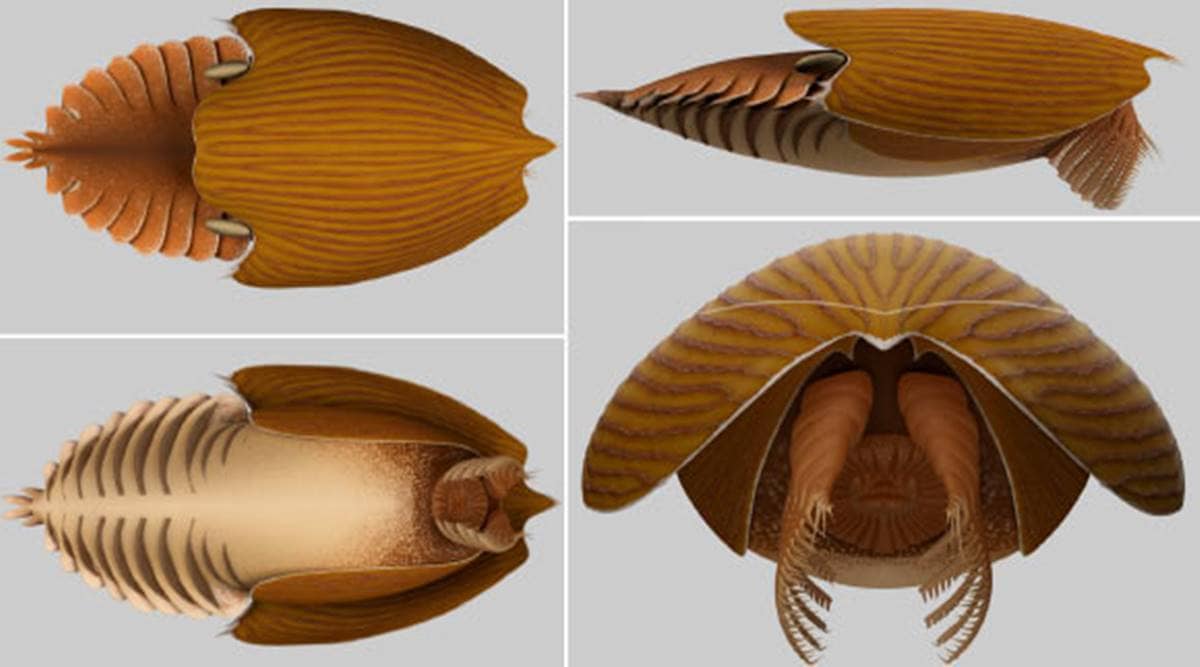
https://www.youtube.com/watch?v=dgSb2njfJ5Y
The discovery of Titanokorys gainesi was profiled in the CBC’s The Nature of Things episode “First Animals”. These and other Burgess Shale specimens will be showcased in a new gallery at ROM, the Willner Madge Gallery, Dawn of Life, opening in December 2021.
https://www.rom.on.ca/en/about-us/newsroom/press-releases/massive-new-animal-species-discovered-in-half-billion-year-old
Last edited by Otangelo on Tue Oct 12, 2021 8:16 am; edited 7 times in total



